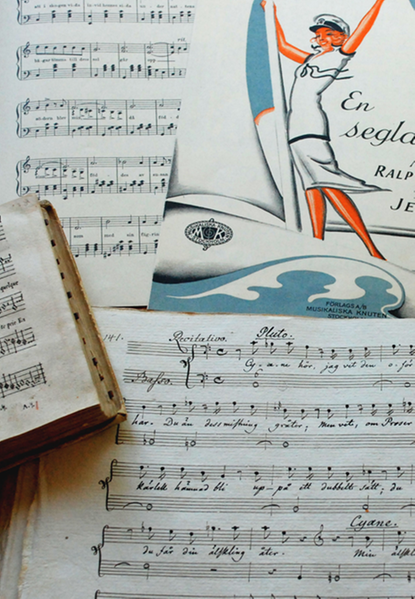Music Collections
How to find and use our Music Collections.
Search for sheet music
- Handwritten sheet music and sheet music in specific archives can be found in Alvin – Platform for digital collections and digitized cultural heritage.
- Printed sheet music can be found in Libris.
Sheet music not yet searchable in Alvin or Libris can be found in:
- Catalog of music manuscripts -1970 – Handwritten sheet music acquired for the Library's collections before 1970.
- Catalogue of printed music -1970 – Printed scores acquired by Uppsala University Library before 1970.
- Catalogue of music scores 1970-1980 – Printed and handwritten music scores acquired by Uppsala University Library between 1970 and 1980.
Access the Music Collections
View digitised collections
Some of the collections have been digitised and are available in Alvin and Düben Collection Database Catalogue.
View collections that are not yet digitised
If you want to study items that are not yet digitised, you are welcome to visit us and study the items on site or request a digital copy.
Content of the Collection
The Library is one of Sweden's best-stocked libraries for both handwritten and printed music from earlier times. The Collections reflect music-making in various settings, such as monasteries, royal and princely courts, bourgeois homes and universities in Sweden and abroad. The Library's Music Collections consist of printed and handwritten music from the 13th century onwards. Among other things there is
- a large collection of printed music from the 16th and 17th centuries brought from libraries elsewhere in Europe
- modern editions of the collected works of many composers, and contemporary Swedish printed music
- 18th century music in the Gimo Collection from Gimo Manor and the Leufsta Music Collection from Lövstabruk
- collections with links to composers active in Sweden from the 18th century on, such as Hugo Alfvén, Joseph Martin Kraus and Allan Pettersson
- collected editions of works by both well-known and lesser-known international composers
- printed editions of music from the Library's collections.
Among the Library's most noteworthy musical treasures are the Cancionero de Uppsala, which features Spanish vocal music from the 16th century; the Dübens Collection, with music from the 17th and early 18th centuries; and Mozart's handwritten drafts of passages from one of his most performed operas, The Magic Flute.
How did the Library acquire its Music Collections?
The Music Collections have been built up since the 17th century through donations, exchanges and purchases. Modern Swedish sheet music has been acquired through legal deposits. Sheet music has also come to the Library as part of individual archives.


